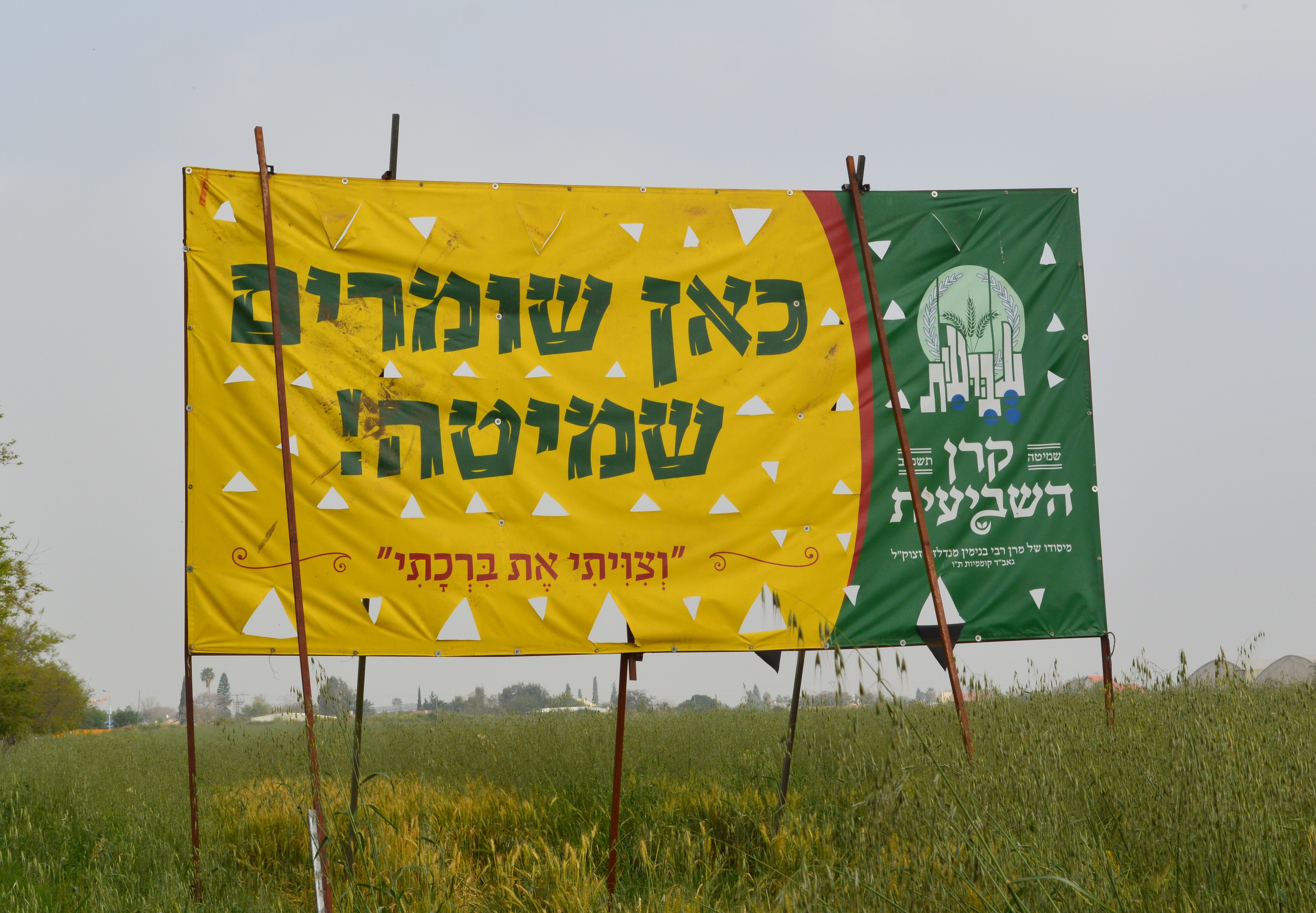|
Maaserot
Ma'aserot ( he, מַעֲשְׂרוֹת, lit. "Tithes") is the seventh tractate of ''Seder Zeraim'' ("Order of Seeds") of the ''Mishnah'', ''Tosefta'', and the ''Jerusalem Talmud''. It discusses the types of produce liable for tithing as well as the circumstances and timing under which produce becomes obligated for tithing. In Biblical times, during each of the six years of the cycle, ''" Maaser Rishon"'' was given to Levites as 10% of an individual's crop. ''"Maaser Sheni"'' was separated in the first, second, fourth and fifth year and is 10% of the crop remaining after ''"Maaser Rishon"''. It was brought to Jerusalem to be eaten there or was redeemed upon coins which were deconsecrated upon food in Jerusalem. The final category is ''"Maaser Ani"'' that is given to the poor in the third and sixth years. Chapters The treatise is divided into five chapters (three in the ''Tosefta''). Its contents are summarized as follows: Ch. 1: Whatever is edible, and is private property, and grow ... [...More Info...] [...Related Items...] OR: [Wikipedia] [Google] [Baidu] |
Jerusalem Talmud
The Jerusalem Talmud ( he, תַּלְמוּד יְרוּשַׁלְמִי, translit=Talmud Yerushalmi, often for short), also known as the Palestinian Talmud or Talmud of the Land of Israel, is a collection of rabbinic notes on the second-century Jewish Oral law, oral tradition known as the Mishnah. Naming this version of the Talmud after Palestine (region), Palestine or the Land of Israel rather than Jerusalemis considered more accurate, as the text originated mainly from Galilee in Byzantine Palaestina Secunda rather than from Jerusalem, where no Jews lived at the time. The Jerusalem Talmud predates its counterpart, the Talmud#Babylonian Talmud, Babylonian Talmud (known in Hebrew as the ), by about 200 years, and is written primarily in Jewish Palestinian Aramaic. Both versions of the Talmud have two parts, the Mishnah (of which there is only one version), which was finalized by Judah ha-Nasi around the year 200 CE, and either the Babylonian or the Jerusalem Gemara. The Gemara i ... [...More Info...] [...Related Items...] OR: [Wikipedia] [Google] [Baidu] |
Tithes In Judaism
The tithe is specifically mentioned in the Books of Leviticus, Numbers and Deuteronomy. The tithe system was organized in a seven-year cycle, the seventh-year corresponding to the '' Shemittah''-cycle in which year tithes were broken-off, and in every third and sixth-year of this cycle the second tithe replaced with the poor man's tithe. These tithes were akin to taxes for the people of Israel and were mandatory, not optional giving. This tithe was distributed locally "within thy gates" () to support the Levites and assist the poor. Every year, '' Bikkurim'', ''terumah'', ''ma'aser rishon'' and ''terumat ma'aser'' were separated from the grain, wine and oil (). Initially, the commandment to separate tithes from one's produce only applied when the entire nation of Israel had settled in the Land of Israel. The Returnees from the Babylonian exile who had resettled the country were a Jewish minority, and who, although they were not obligated to tithe their produce, put themselves und ... [...More Info...] [...Related Items...] OR: [Wikipedia] [Google] [Baidu] |
Am Ha'aretz
''Am haaretz'' () or the people of the Land is a term found in the Hebrew Bible and (with a different meaning) in rabbinic literature. The world usually is a collective noun in Biblical Hebrew but occasionally pluralized as עמי הארץ ''amei ha-aretz'' "peoples of the land" or (in Late Biblical Hebrew) super-pluralized as עמי הארצות ''amei ha-aratzot'' "peoples of the lands". In Mishnaic Hebrew and later, the term is used as a euphemism for "ignoramus", such that an individual ignoramus is an ''am ha-aretz'' and multiple are ''amei ha-aretz.'' In Modern Hebrew, the usual plurals are ''am ha-aretz'' and ''amei ha-aretz'' but the super-plural ''amei ha-aratzot'' is occasionally used. In Yiddish and Yeshivish, it is often pluralized עמי הארצים ''amei ha-aratzim'' or עמרצים ''amaratzim''. Tanakh In the Tanakh, the term "the people of the land" (Hebrew ''am ha'aretz'') refers to a special social group or caste within the Kingdom of Judah. Among the activiti ... [...More Info...] [...Related Items...] OR: [Wikipedia] [Google] [Baidu] |
Sefaria
Sefaria is an online open source, free content, digital library of Jewish texts. It was founded in 2011 by former Google project manager Brett Lockspeiser and journalist-author Joshua Foer. Calling itself "a living library of Jewish texts", Sefaria relies on volunteers to add texts and translations. The site provides cross-references and interconnections between different texts. Hebrew, Aramaic, and Judeo-Arabic texts are provided under a free license in the original and in translation. The website also provides a tool for creating source sheets. Sefaria is a non-profit organization. The technology is maintained by a team of 18 engineers. According to its chief data officer Lev Israel in 2019, the service received 250,000 unique visitors monthly. Etymology The name ''Sefaria'' derives from the words ''sefer'', or "book", and ''sifria'' ("library") in Hebrew. History Sefaria was originally founded in 2011 by journalist Joshua Foer and Brett Lockspeiser, a former product man ... [...More Info...] [...Related Items...] OR: [Wikipedia] [Google] [Baidu] |
Land Of Israel
The Land of Israel () is the traditional Jewish name for an area of the Southern Levant. Related biblical, religious and historical English terms include the Land of Canaan, the Promised Land, the Holy Land, and Palestine (see also Israel (other)). The definitions of the limits of this territory vary between passages in the Hebrew Bible, with specific mentions in Genesis 15, Exodus 23, Numbers 34 and Ezekiel 47. Nine times elsewhere in the Bible, the settled land is referred as "from Dan to Beersheba", and three times it is referred as "from the entrance of Hamath unto the brook of Egypt" (1 Kings 8:65, 1 Chronicles 13:5 and 2 Chronicles 7:8). These biblical limits for the land differ from the borders of established historical Israelite and later Jewish kingdoms, including the United Kingdom of Israel, the two kingdoms of Israel (Samaria) and Judah, the Hasmonean Kingdom, and the Herodian kingdom. At their heights, these realms ruled lands with similar but ... [...More Info...] [...Related Items...] OR: [Wikipedia] [Google] [Baidu] |
Shemitta
The sabbath year (shmita; he, שמיטה, literally "release"), also called the sabbatical year or ''shǝvi'it'' (, literally "seventh"), or "Sabbath of The Land", is the seventh year of the seven-year agricultural cycle mandated by the Torah in the Land of Israel and is observed in Judaism. During ''shmita'', the land is left to lie fallow and all agricultural activity, including plowing, planting, pruning and harvesting, is forbidden by ''halakha'' (Jewish law). Other cultivation techniques (such as watering, fertilizing, weeding, spraying, trimming and mowing) may be performed as a preventive measure only, not to improve the growth of trees or other plants. Additionally, any fruits or herbs which grow of their own accord and where no watch is kept over them are deemed ''hefker'' (ownerless) and may be picked by anyone. A variety of laws also apply to the sale, consumption and disposal of ''shmita'' produce. All debts, except those of foreigners, were to be remitted. Chapt ... [...More Info...] [...Related Items...] OR: [Wikipedia] [Google] [Baidu] |
Pe'ah
Pe'ah ( he, פֵּאָה, lit. "Corner") is the second tractate of ''Seder Zeraim'' ("Order of Seeds") of the Mishnah and of the Talmud. This tractate begins the discussion of topics related to agriculture, the main focus of this ''seder'' (order) of the Mishnah. The tractate discusses the laws of gifts to the poor when a person harvests their field, vineyards or trees, based on commandments in the Torah. The tractate also deals with the laws of giving charity in general. The tractate is called Pe'ah because the first part of the tractate deals with the laws of Pe'ah, while the remaining part of the tractate deals with a number of other related topics. In addition to the Mishnah, a tractate Pe'ah exists in the Jerusalem Talmud (commenting on the Mishnah tractate), but not in the Babylonian Talmud. Topics This tractate discusses the gifts due to the poor when fields, vineyards or trees are harvested, and the laws of giving charity in general. Six categories of obligations are discu ... [...More Info...] [...Related Items...] OR: [Wikipedia] [Google] [Baidu] |
Syria (region)
Syria (Hieroglyphic Luwian: 𔒂𔒠 ''Sura/i''; gr, Συρία) or Sham ( ar, ٱلشَّام, ash-Shām) is the name of a historical region located east of the Mediterranean Sea in Western Asia, broadly synonymous with the Levant. Other synonyms are Greater Syria or Syria-Palestine. The region boundaries have changed throughout history. In modern times, the term "Syria" alone is used to refer to the Arab Republic of Syria. The term is originally derived from Assyria, an ancient civilization centered in northern Mesopotamia, modern-day Iraq. During the Hellenistic period, the term Syria was applied to the entire Levant as Coele-Syria. Under Roman rule, the term was used to refer to the province of Syria, later divided into Syria Phoenicia and Coele Syria, and to the province of Syria Palaestina. Under the Byzantines, the provinces of Syria Prima and Syria Secunda emerged out of Coele Syria. After the Muslim conquest of the Levant, the term was superseded by the Ara ... [...More Info...] [...Related Items...] OR: [Wikipedia] [Google] [Baidu] |
Aramaic Language
The Aramaic languages, short Aramaic ( syc, ܐܪܡܝܐ, Arāmāyā; oar, 𐤀𐤓𐤌𐤉𐤀; arc, 𐡀𐡓𐡌𐡉𐡀; tmr, אֲרָמִית), are a language family containing many varieties (languages and dialects) that originated in the ancient region of Syria. For over three thousand years, It is a sub-group of the Semitic languages. Aramaic varieties served as a language of public life and administration of ancient kingdoms and empires and also as a language of divine worship and religious study. Several modern varieties, namely the Neo-Aramaic languages, are still spoken in the present-day. The Aramaic languages belong to the Northwest group of the Semitic language family, which also includes the Canaanite languages such as Hebrew, Edomite, Moabite, and Phoenician, as well as Amorite and Ugaritic. Aramaic languages are written in the Aramaic alphabet, a descendant of the Phoenician alphabet, and the most prominent alphabet variant is the Syriac alphabet. The ... [...More Info...] [...Related Items...] OR: [Wikipedia] [Google] [Baidu] |
Bava Metzia
Bava Metzia (Talmudic Aramaic: בָּבָא מְצִיעָא, "The Middle Gate") is the second of the first three Talmudic tractates in the order of Nezikin ("Damages"), the other two being Bava Kamma and Bava Batra. Originally all three formed a single tractate called ''Nezikin'' (torts or injuries), each ''Bava'' being a Part or subdivision. Bava Metzia discusses civil matters such as property law and usury. It also examines one's obligations to guard lost property that have been found, or property explicitly entrusted to him. Mishnah The Mishnah of Bava Metzia contains ten chapters. Honorary trustee (''Shomer Hinam''), chapters 1-3 An honorary trustee is one who finds lost property. He has to keep it as '' shomer hinam'' (watching over another's property without receiving any remuneration) until he can restore it to the rightful owner (). The laws as to what constitutes finding, what to do with the things found, how to guard against false claimants, how to take care of the ... [...More Info...] [...Related Items...] OR: [Wikipedia] [Google] [Baidu] |




